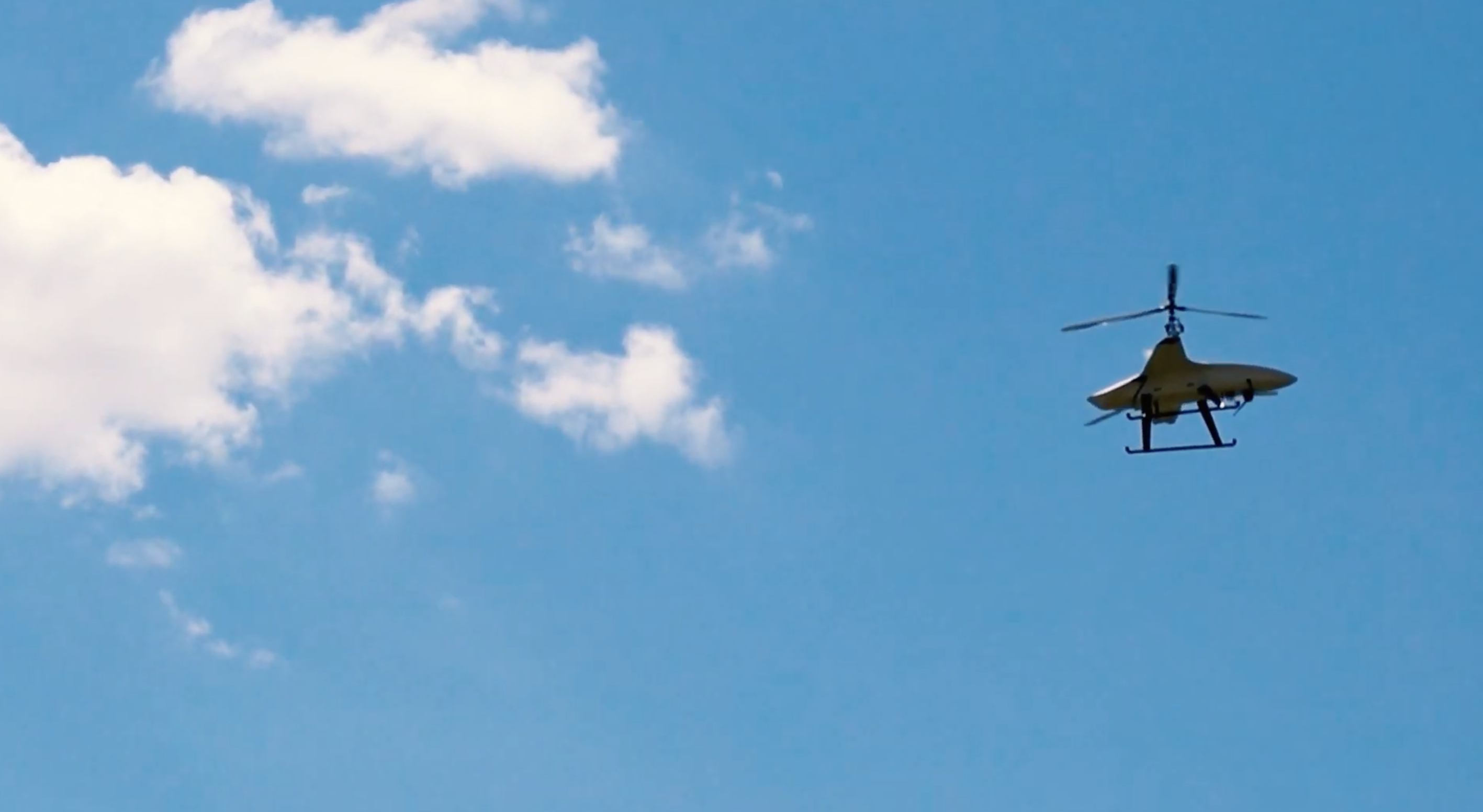According to the World Economic Forum’s report on digital transformation in oil & gas, predictive...
Five Reasons to Hire the Experts to Run Your Aerial Asset Monitoring Program

A picture is worth a thousand words, and to that end, many organizations are in search of a way to meaningfully visualize assets, infrastructure, and operations on a massive geographic scale. Traditionally, this takes the form of highly manual processes to capture visual data, such as manned flights or ground surveys, which tend to generate piecemeal bits of information or a mass of imagery that is devoid of meaning until it undergoes time-consuming analysis.
For this reason, many organizations are starting to embrace the power of Unmanned Aerial Vehicles (UAVs) to gather the data they’re seeking. Functioning as remote sensors, a UAV gathers aerial data of incredible quality. However, getting the utmost valuable data from a UAV is a multi-step process that may be difficult to build out in-house.
Let’s take a look at the process of collecting high-quality aerial data for your long-range asset and learn why more and more oil and gas companies are choosing to outsource this effort to the experts.
1. Get off the ground quickly.
First and foremost, outsourcing your aerial monitoring program grants you immediate access to a fleet of professional-grade unmanned vehicles that are ready to complete your missions. This is a significant advantage, as the assembly of such a fleet in-house requires an incredible amount of time and capital expenditure.
Sourcing and purchasing a fleet is expensive before you even factor in the costs associated with running a full-scale operation. Once operations begin, the aerial systems themselves are going to undergo many changes throughout deployments, requiring modifications to meet new mission objectives, routine maintenance, and perhaps new vehicles entirely for future projects. These ongoing efforts will require specialized engineers as well as resources focused on developing new processes and standards within your organization.
Companies like SkyX have already invested the time and money needed to develop highly-automated systems that make routine asset monitoring and inspection over long-ranges a breeze and relatively quick to deploy.
2. Avoid navigating complex regulatory hurdles.
Navigating the regulatory space can create unnecessary complications and delays to a project if you’re approaching this for the first time.
In the United States, all aviation and UAS activity is regulated by the Federal Aviation Administration (FAA) which created the Part 107 framework to permit commercial UAS operations under specific conditions. A sandbox, if you will.
Even with a well-defined framework, there is a rigorous waiver process that has to be navigated in order to perform more complicated operations outside the normal operating rules; exceptions to the rules, if you will. Common waivers include permission to fly at night, or over people, or exceed normal altitude restrictions. Each waiver requires an operator to complete a robust safety and risk analysis of their operation to demonstrate that they can maintain an equivalent level of safety to the normal operating rules.
Probably the most sought after waiver – the BVLOS waiver – grants the operator permission to fly beyond the line of sight of a pilot or ground observer. This waiver typically requires a staged approach where an operator is granted permission to fly progressively longer BLVOS segments. Beyond the normal requirements for UAS flights, the operator must demonstrate a high level of operating excellence and airmanship that can only be proven through experience (even if you happen to live next door to Stephen M. Dickson).
Working with an external provider means that the regulatory burden is deferred to the vendor, who works with the FAA to ensure safe and compliant integration with national airspace. Essentially, being able to get to work quickly without having to go through the ever-popular Aviation Regulations 101 course.
3. Take the complexity of flight operations off your plate.
Any aerial operation, be it manned or unmanned, is an exercise in risk management. Before you can take to the skies, a thorough assessment of the flight path and surrounding area is needed to develop an airtight flight plan. Otherwise, you may end up colliding into a tree. Nature: 1. Expensive hardware: 0.
Aside from identifying the segments for inspection, along with suitable take-off and landing locations, several factors must be accounted for to ensure a safe and successful operation.
- How will the UAV maintain communications throughout its flight?
- Which primary and back-up communications are well-suited for the area?
- Are there any hazards that can affect the operation, such as local weather and obstacles to the flight path?
- Are you likely to conflict with air traffic in controlled airspace?
- How will you mitigate these risks and deconflict a situation in the event of an active hazard?
These are all questions a service provider can answer on your behalf.
Once the operation begins, you want an experienced drone pilot at the controls. Even highly-autonomous vehicles need a pilot; albeit one that knows how to communicate with the vehicle, maintain remote situational awareness and ensure that the vehicle is performing optimally.
If you’ve got assets spread out across the country, you will definitely need pilots who know how to operate in scorching hot deserts and snowy boreal forests. Rather than trying to find, train and certify pilots yourself, outsourcing operations means that someone else does this for you.
SkyX has a roster of certified pilots with over 1,000 cumulative flights of experience who are routinely deployed at customer sites for VLOS operations. But what sets us heads and shoulders above everyone else is our unique experience performing BVLOS operations. We’re using proprietary aerial systems and operations software that is purpose-built for BVLOS flight. We didn’t find what we needed in the market, so we built it ourselves. No one has access to this technology (NSA-level security measures have been put in place to prevent hacking from professionals and hobbyists alike), and it is very difficult to replicate in-house.
4. Get access to intelligent data you can act on.
You may need aerial data to keep track of erosion or ground movement on your right-of-way so it doesn’t affect the pipeline underneath or you may be looking to pinpoint the location of a spill or leak, or even assess the extent of the damage to surrounding areas or property after an incident.
Sourcing raw optics with a UAV is just the first step of the process in capturing high-quality aerial data. A 30 km segment could produce at least 4,500 images. 4,500 images that you have to go through. Oh, and by the way, those are just images. Turning them into valuable data takes even more time, effort and know-how. So if you’ve got someone on the team wanting to dust off their data-science degree this would be perfect for them. But you don’t. So let’s explore option B.
By using a combination of machine learning and human verification, SkyX analyzes the ocean of images from each inspection at a level of efficiency far beyond a human being’s capabilities. The algorithms we’ve developed scan the images for the anomalies and objects you’re monitoring for and with a quick verification with a human subject matter expert, we can hone-in in the actionable data points from each inspection.
An aerial data-as-a-service provider can take the processing and analysis workload off of your team and deliver the right datasets and models, such as annotated imagery with anomalies detected, orthomosaics, digital elevation models, and predictive models, among others, needed to keep operations running smoothly and empower your decision making process.
5. Collect valuable aerial data continuously and seamlessly.
Continued support is critical for both your flight operations in the field and the data deliverables for your team.
Aviation excellence is borne of dedicated maintenance. Do you know why commercial airlines enjoy some of the highest safety records in world travel? World-class maintenance programs. Aviation safety is a top priority at SkyX and we’ve implemented a rigorous preventative maintenance schedule to ensure that flight-critical components are inspected and replaced at routine intervals. This ensures your aerial monitoring program remains a well-oiled machine. Ironically, there isn’t an ounce of oil in many of our vehicles.
On the data side, continued support maximizes the quality of data you receive from every new inspection. As raw data feeds into the system for analysis, and flagged anomalies and objects are verified or discarded, the system trains itself to better identify the actionable points of interest to your operation. Not to mention, as a library of historical data sets is accumulated, we can help you to leverage historical data to develop powerful predictive models. With these insights, you can get in front of the issues you’re trying to mitigate with your aerial monitoring operation.
Aerial monitoring solutions can give your remote workforces the data they need to make intelligent decisions around what’s happening in the field. By outsourcing these efforts to a knowledgeable partner that can cover the entire process of sourcing, analyzing, and delivering the data you need – you can reap all the benefits without having to completely overhaul the inner workings of your organization.
Have questions about how high-quality aerial data can help protect your assets?
Contact us to discuss your unique challenges and data requirements.
